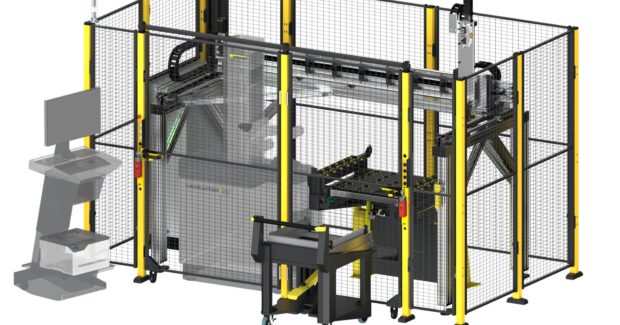Tool Presetting Misconceptions That Hold Back Your Shop
Often a tool presetter is the first step on a shop’s journey to more efficient manufacturing.
Posted: June 11, 2024

Over the last decade, a growing number of job shops have incorporated tool presetting machines into their workflows as an essential part of a modern manufacturing operation.
By using an offline presetter to automatically measure cutting tool parameters such as length, diameter and runout, these shops have reduced setup times, increased machine tool uptime, extended tool life and improved surface finishes on parts.
But stubborn misconceptions around tool presetters still hold back some shops from investing in this technology and seeing the same results. Here are several common myths and the reality:
- Tool Presetters Only Benefit Large-Scale Operations
Manufacturing operations of every size benefit from faster setup times that free up more machine tool productivity. But presetters are especially important for shops with high-mix, low-volume production and frequent job changes. The more often a shop changes jobs, the more time is spent touching off tools and setting up. ZOLLER’s internal research found measuring tools on a presetter before loading them into a machine tool for production is at least 40% quicker. This more efficient workflow results in potential savings of $20,000 each year per machine tool.* Those numbers explain why most shops report an ROI on their presetter within three to six months.
- Measuring Tools in a Machine Tool is the Same as Using a Presetter
While some CNC machines offer probes or lasers for tool measurement, achieving accurate, repeatable results can prove difficult with these methods. Most shops find a presetter provides a higher degree of precision and consistency than measuring with a machine tool. ZOLLER presetters, for example, provide repeatable measurements within 2 microns to satisfy the tight tolerances required in fields like aerospace, medical device manufacturing and more.
A ZOLLER presetter can also provide several measuring results at the same time, including diameter, length, corner radius, angle 1, angle 2 and runout. Conducting all these measurements outside the machine tool maximizes machine tool productivity, allowing one job to run while the tools for the next one are prepared.
- Learning to use a Presetter is Difficult, Especially Amid Workforce Shortages
Every product has a learning curve, but today’s presetters are easier than ever to learn. Intuitive software, such as the »pilot« from ZOLLER, features a graphic interface that guides users throughout the measuring process, with safeguards built in to prevent errors.
Presetters also offer a unique opportunity as the makeup of the manufacturing industry’s workforce continues to evolve. For tech-savvy generations raised in the digital world, understanding how to use a presetter is much simpler than navigating the various methods for manually touching off tools.
- Presetters Offer Only a Narrow Range of Capabilities
For many shops, presetters offer a low-cost, high-reward entry-point into more efficient manufacturing, but companies that silo these powerful machines miss their full potential. Using a presetter with a ZOLLER »zidCode« barcode scanner, for example, automates data transfer from a presetter to the machine tool and prevents errors. Integrating tool management software into the manufacturing environment allows data measured by a presetter to be stored in a single-source database to help with tool identification, assembly, wear, usage, etc. That sets the stage for implementing more advanced options, such as the »coraMeasure LG« automation cell, which works with a presetter to automatically identify and measure tools. Often, a tool presetter is just the first step of a shop’s journey to more efficient manufacturing.
End Note
*Calculated for 20 tool changes, changeover of three minutes, 200 working days per year, one shift per day and a $100 hourly machine rate.
https://www.zoller.info/us/home
















